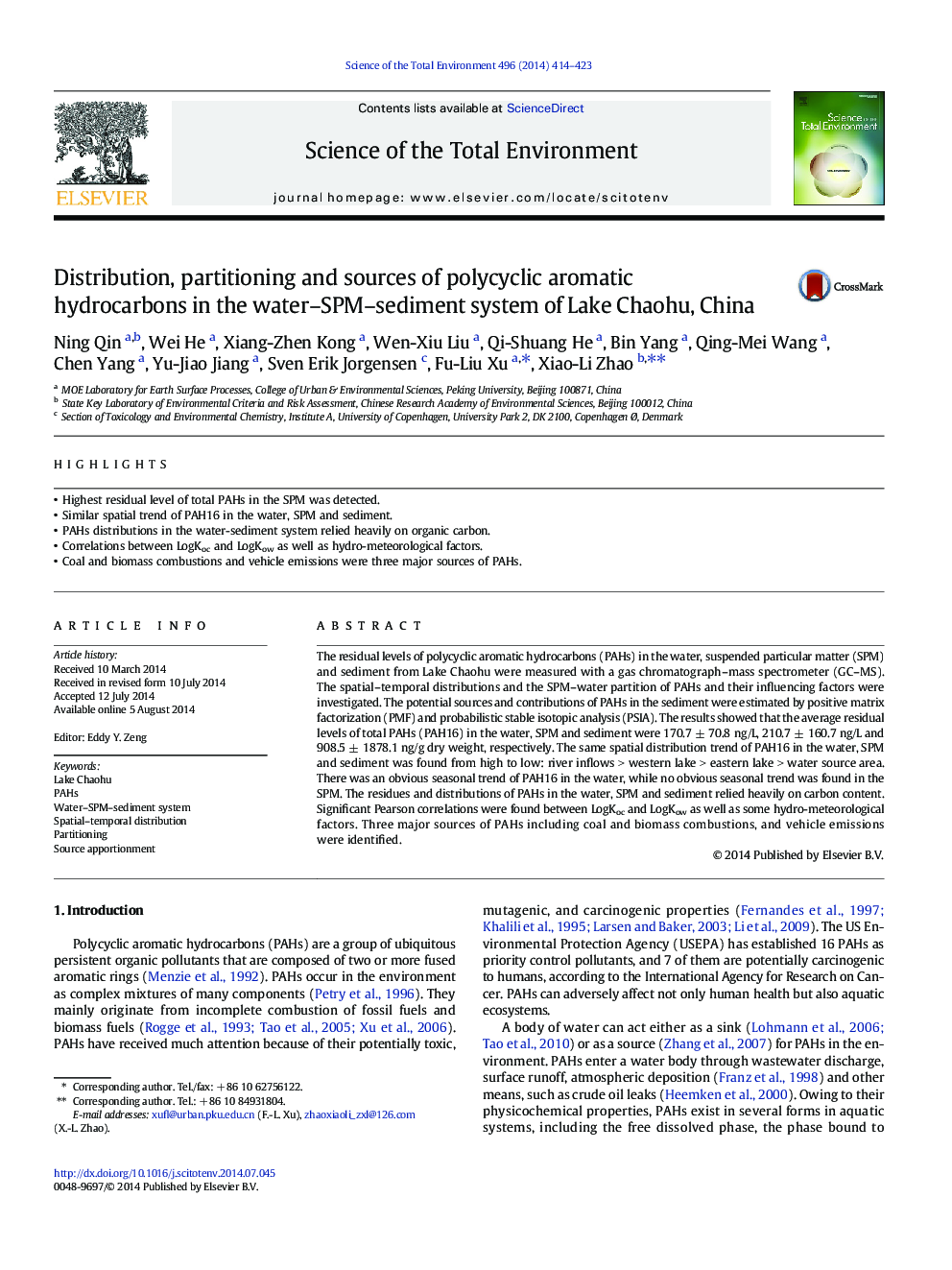| Article ID | Journal | Published Year | Pages | File Type |
|---|---|---|---|---|
| 6329477 | Science of The Total Environment | 2014 | 10 Pages |
â¢Highest residual level of total PAHs in the SPM was detected.â¢Similar spatial trend of PAH16 in the water, SPM and sediment.â¢PAHs distributions in the water-sediment system relied heavily on organic carbon.â¢Correlations between LogKoc and LogKow as well as hydro-meteorological factors.â¢Coal and biomass combustions and vehicle emissions were three major sources of PAHs.
The residual levels of polycyclic aromatic hydrocarbons (PAHs) in the water, suspended particular matter (SPM) and sediment from Lake Chaohu were measured with a gas chromatograph-mass spectrometer (GC-MS). The spatial-temporal distributions and the SPM-water partition of PAHs and their influencing factors were investigated. The potential sources and contributions of PAHs in the sediment were estimated by positive matrix factorization (PMF) and probabilistic stable isotopic analysis (PSIA). The results showed that the average residual levels of total PAHs (PAH16) in the water, SPM and sediment were 170.7 ± 70.8 ng/L, 210.7 ± 160.7 ng/L and 908.5 ± 1878.1 ng/g dry weight, respectively. The same spatial distribution trend of PAH16 in the water, SPM and sediment was found from high to low: river inflows > western lake > eastern lake > water source area. There was an obvious seasonal trend of PAH16 in the water, while no obvious seasonal trend was found in the SPM. The residues and distributions of PAHs in the water, SPM and sediment relied heavily on carbon content. Significant Pearson correlations were found between LogKoc and LogKow as well as some hydro-meteorological factors. Three major sources of PAHs including coal and biomass combustions, and vehicle emissions were identified.
